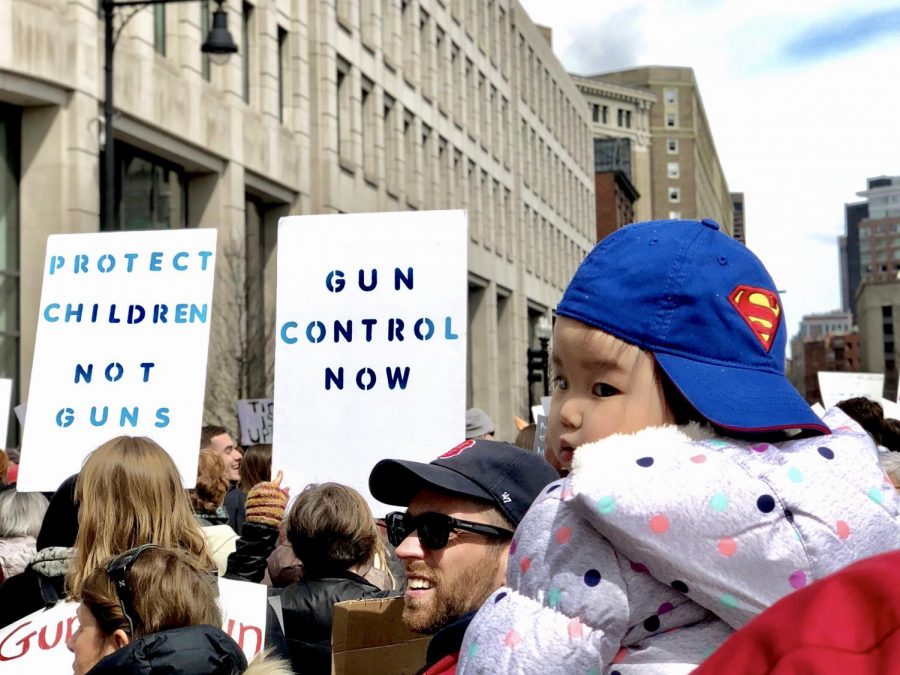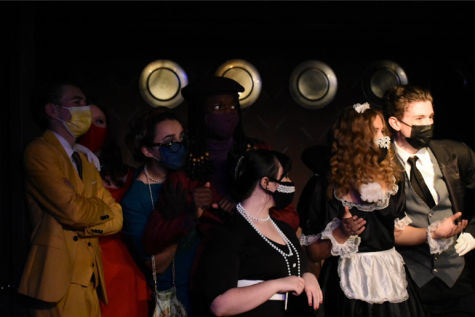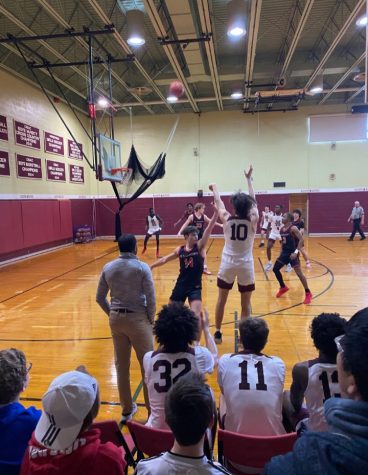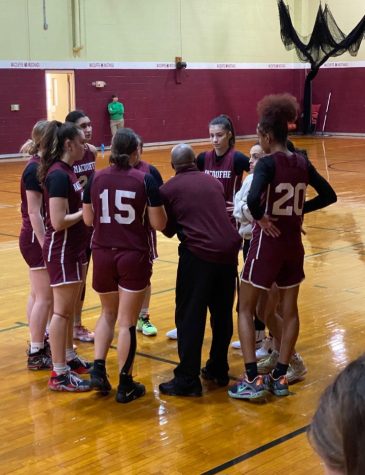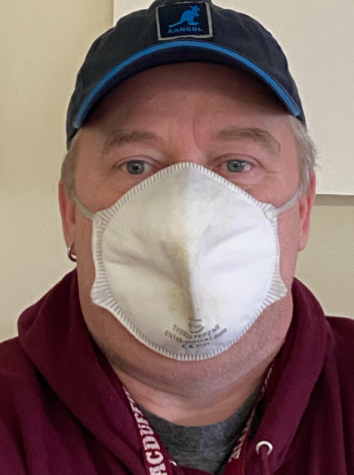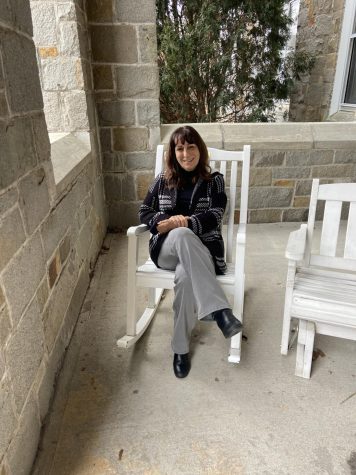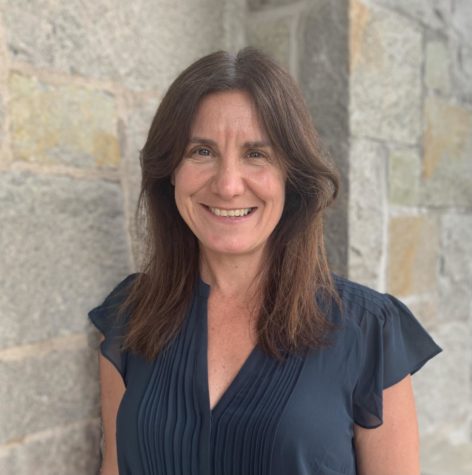When Enough is Enough: March for Our Lives
A child of the next generation sits on mothers shoulders to get a better view of the 70,000 marchers in Boston, Massachusetts at the March For Our Lives. Photo by Sophie Sharp ’19.
April 22, 2018
It was a Saturday morning during March break – a day that most MacDuffie students would take advantage of to sleep past noon – but Senior Owen Albanese had set his alarm to wake up early. A March for our Lives was about to take place in at least one town of every state across the nation. It was a day to protest what had caused so many other days to go horrifically wrong. It was a day to remember those people whose days had been ended by gun violence. And so Albanese willingly arose.
So did several others from MacDuffie. Albanese had sent out an email to the MacDuffie community encouraging those available to participate in the event, in which he set the rendezvous at Children’s Park, across from Northampton High School.
Walking from the Northampton parking garage to Children’s Park, Albanese recalls a dense crowd coming into view.
“As you got to the school you just saw tons of people.” Albanese was surprised when he got there, “I knew there were going to be a lot of people, but I didn’t know it was going to be, like, in the thousands (officials estimated around two to three thousand).”
He elaborated that before the march had even begun “the streets were filled” with people gathered near Northampton High School. They were well equipped for the occasion – “Everyone had, you know, their little banners, and their signs and I thought that was cool. There were some clever ones…that made me laugh. Yeah, that was fun.”
Albanese and his mother arrived at the park about an hour before the march was to begin at noon and waited for the rest of the group from MacDuffie. Some of the first to arrive were Peace Studies Teacher Gregory Vennel and his wife, who talked with Albanese about the reason why so many were gathered. This was a noteworthy conversation for Albanese as it enabled him to recognize the responsibility he holds as a member of the generation to make a change.
He said, “I thought it almost felt like it’s passing the torch.” The youth gathered for the march received the torch alongside Albanese. They were there to show their solidarity in a need for stronger gun control and restrictions against semi-automatic weapons, and they proved that being politically active is not limited to those old enough to vote. In fact, the March for Our Lives across the country were largely organized by the students of Stoneman Douglas High. Among the speakers that presented at the Northampton march later on, there was only one adult.
At noon, the march began. A curious atmosphere wove through the steady beat of footsteps – a quieter one, but not any less powerful. “I expected it to be a lot louder. It wasn’t that loud … I think it was more about being there, instead of being aggressive and being loud about things. It was more about, ‘We’re here to support this and we’re here for a reason,’” Albanese recalled.
Thousands of people all walking together provided a powerful scene. Albanese recollects “It was just crazy, the whole street was filled.” So filled, in fact, that one felt sorry for the poor dogs that people were walking, which, no doubt, “want[ed] to run free, but it was so congested.” Of course, the crowd overflowing the streets wasn’t there on a whim. One woman participating in the march passionately explained her reason for supporting it:
“I’m here today to support the over a million students who have walked out of their classrooms against violence in their schools, against the Trump administration, the NRA [National Rifle Association] that’s profiting off of the murder of children, and to fight for a world without violence, from police violence to mass shooting, to military violence. And I think the only way we can win that kind of world is if we come together and protest in the streets and we grow a grassroots movement.”
Despite the serious cause of the march, most were in a light mood. “Everyone was super friendly- we walked by families, there were a bunch of college students – they tried chanting- it didn’t work,” Albanese laughed. “It didn’t. But it was fun.”
Time passed quickly – “The walk itself wasn’t that long, maybe twenty minutes if I remember correctly.” The route ended in front of the city hall, where the marchers congregated.
Once all together, the solemn undertones of the march were felt. Much was expounded, remembered, and pondered.
One student read a poem written about the school shootings. Especially striking to Albanese was the comment the author of another poem made, who said something, according to Albanese, along the lines of, “There have been so many shootings, I don’t even remember which shooting I wrote this about.”
Facts and statistics were relayed in speeches and on signs. One sign displayed a statistic showing the vast difference in the number of shootings between the United States and countries with stricter gun laws. MacDuffie students from foreign countries shared brief thoughts on the concept illustrated by the sign’s message. Senior Oliver Wang expressed that, as far as firearms were concerned, it felt safer in China, because they are illegal to own; in China, “no civilian may lawfully acquire, possess or transfer a firearm or ammunition.” Senior Nam Vo, from Vietnam, expressed similar feelings, saying that the notion of needing gun ownership to be safe isn’t a globally held idea – in fact, roughly 50% of all guns owned by civilians are in the United States.
While statistics plastered across signs were irrefutably powerful, the pathos that reverberated from speakers into the crowd was equally significant. One student, a Senior at Northampton High School, sang a version of Leonard Cohen’s Hallelujah, but changed the verses to honor each of the seventeen victims killed at the Parkland school shooting in Florida. He then led the crowd to join in for the chorus of the song, described by Albanese as “sad,” but “powerful.”
Albanese described a middle school student who spoke later on, remembering his words gave the effect of, “‘We’re the generation that people say, does nothing, they look at their phone all day, they’re super lazy,’ you know, that kind of stuff, and then he made the point like, ‘Look at us now, come on. What are we doing now?’” Albanese also noted that the speakers were incredibly fervent; “One of the students was really passionate. He was yelling- not yelling like screaming, but he was passionate. I mean, his voice was cracking, he was super into it.”
The impact of the march lingered after its conclusion, though Albanese admitted the topic had been stuck in the back of his mind “long before” that day. Dean of Faculty David Denno relates to Albanese, remembering the first time gun violence impacted him “was at Columbine, because I was driving home from graduate school, and I was in the car and – it’s just one of those events I remember distinctly. Because at that time, at least for me, in 1999, it felt like a novel experience – you know, this mass school shooting.” The first mass school shooting in America occured in 1999, when fourteen students (including the two shooters) and one teacher were killed at Columbine High School in Colorado.
The debate on gun control hasn’t rested since it began, and different stances on many angles of the topic exist. Denno, Albanese, and Head of the STEM department Kristina Hamel (who was also a cop for five years) all had opinions on various aspects, including age limits, access to automatic and semi-automatic weapons, and the Second Amendment (right to bear arms). For example, Albanese felt that one problem with gun control was the relatively easy access we have to firearms here in the U.S.; Hamel shared similar feelings. She referenced one law which states that at the age of fourteen, one can apply for an FID (Firearm Identification) card, which, in Massachusetts, allows a fifteen year old the “purchase, possession, and transportation of non-large-capacity rifles, shotguns, and ammunition.,” with parental consent. All in all, Hamel said, “There are loopholes in the law that they {lawmakers} need to tighten up on.” Denno, in regards to semi-automatic and fully automatic assault weapons, agreed with Hamel that “Right now they are far too easily accessible.”
Of course, opposing opinions exist that carry just as much weight. After threats to “shoot up the school” were made at Granby Junior-Senior High School, Headmaster Steven Griffin stressed during assembly about the importance of thinking critically about such divisive topics and looking to many sources of information. There’s a reason this has been a debate since the Columbine shooting nineteen years ago- if there were easy solution, we wouldn’t have a problem.
. . .
The day was over and Albanese felt, quite simply, sad. Hearing how one teacher sacrificed himself in an attempt save his students in Florida, and singing in remembrance of an unarmed black man shot over twenty times in California, invoked a dismal atmosphere. For many, just getting caught up in the whirlwind of arguments and not knowing what to think feels hopeless. It can feel sad to hear multifaceted approaches and know that there is no one simple solution; to recognize that sometimes, alternative sides of the debate can be justified. It’s difficult to use the word “sad” because we know that to those personally affected by gun violence, sadness is a painfully simplified adjective. It minimizes what they suffer each day.
So for those feeling thus, it is important to remember that pain can initiate great change. As Senior of Marjory Stoneman Douglas High School Emma Gonzalez puts it, “It’s time for victims to be the change that we need to see.”
